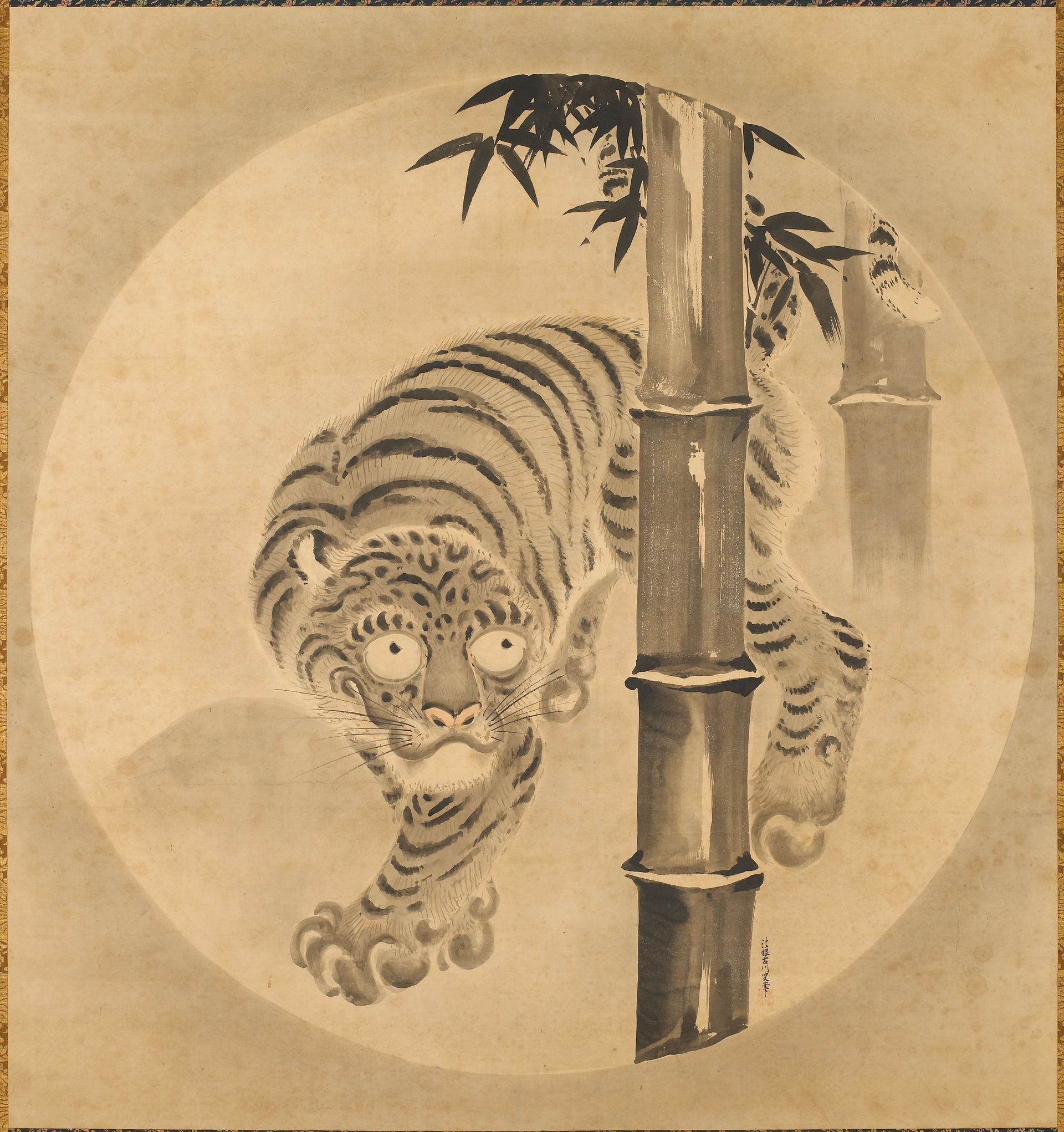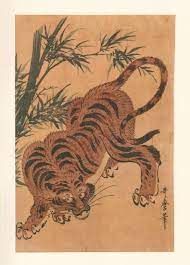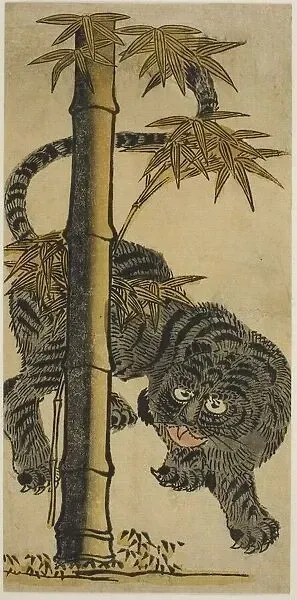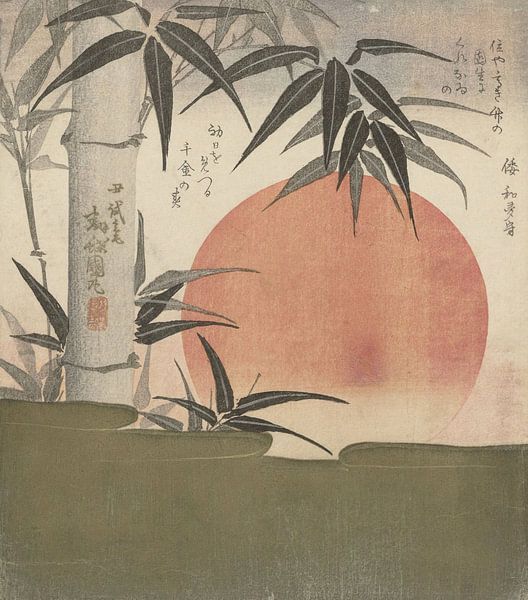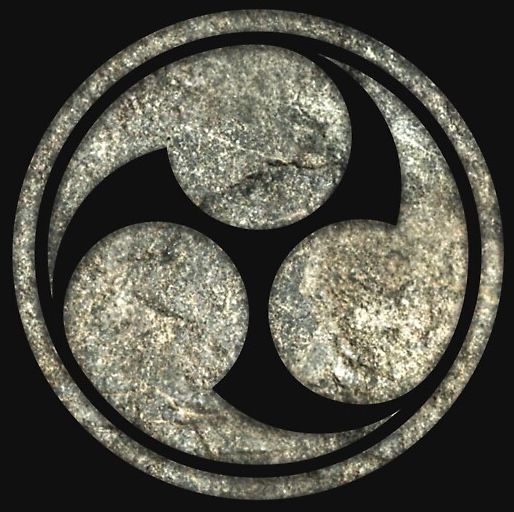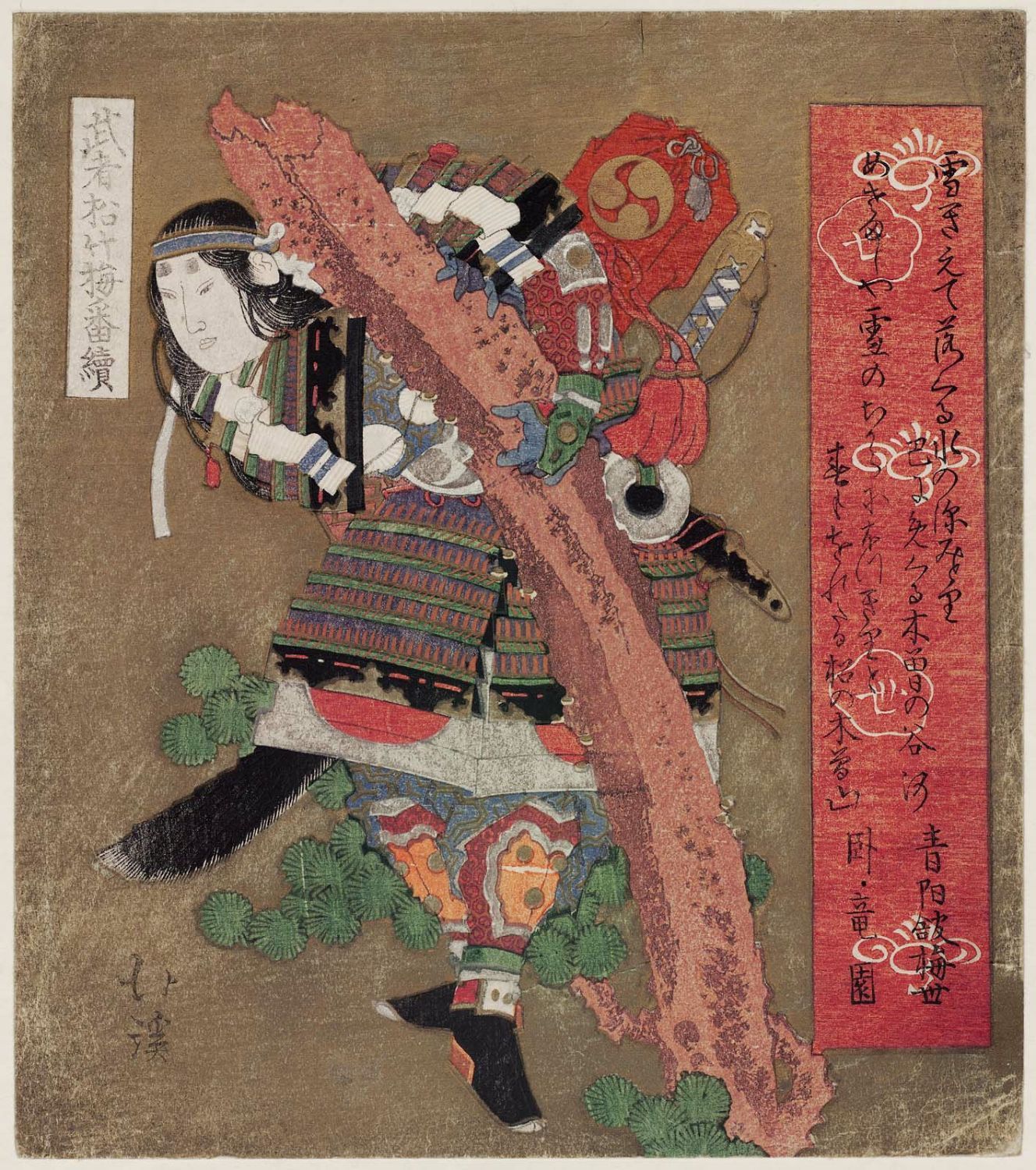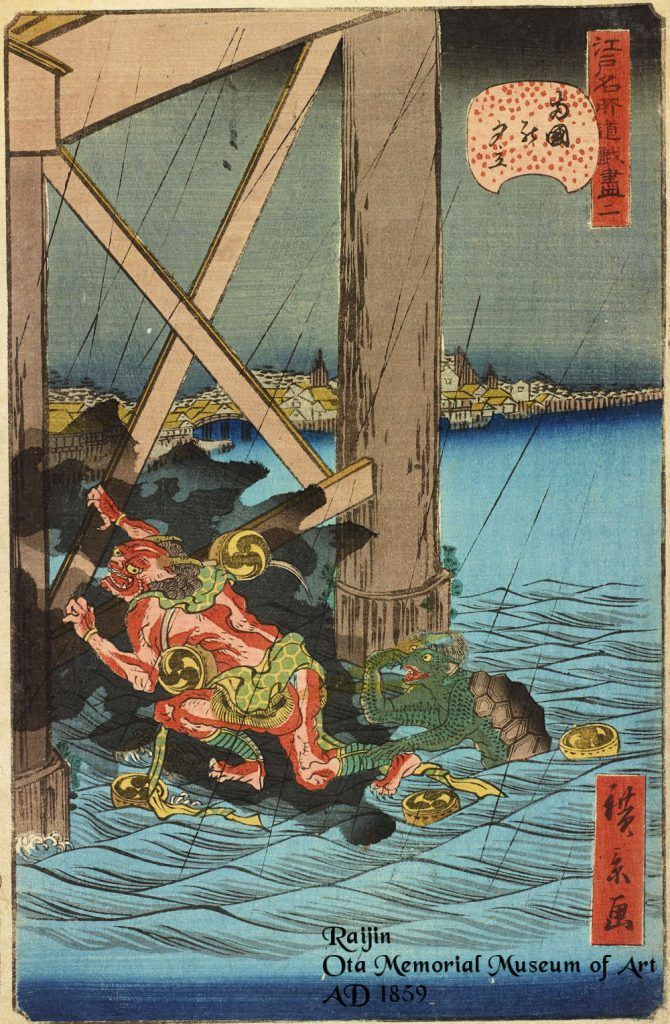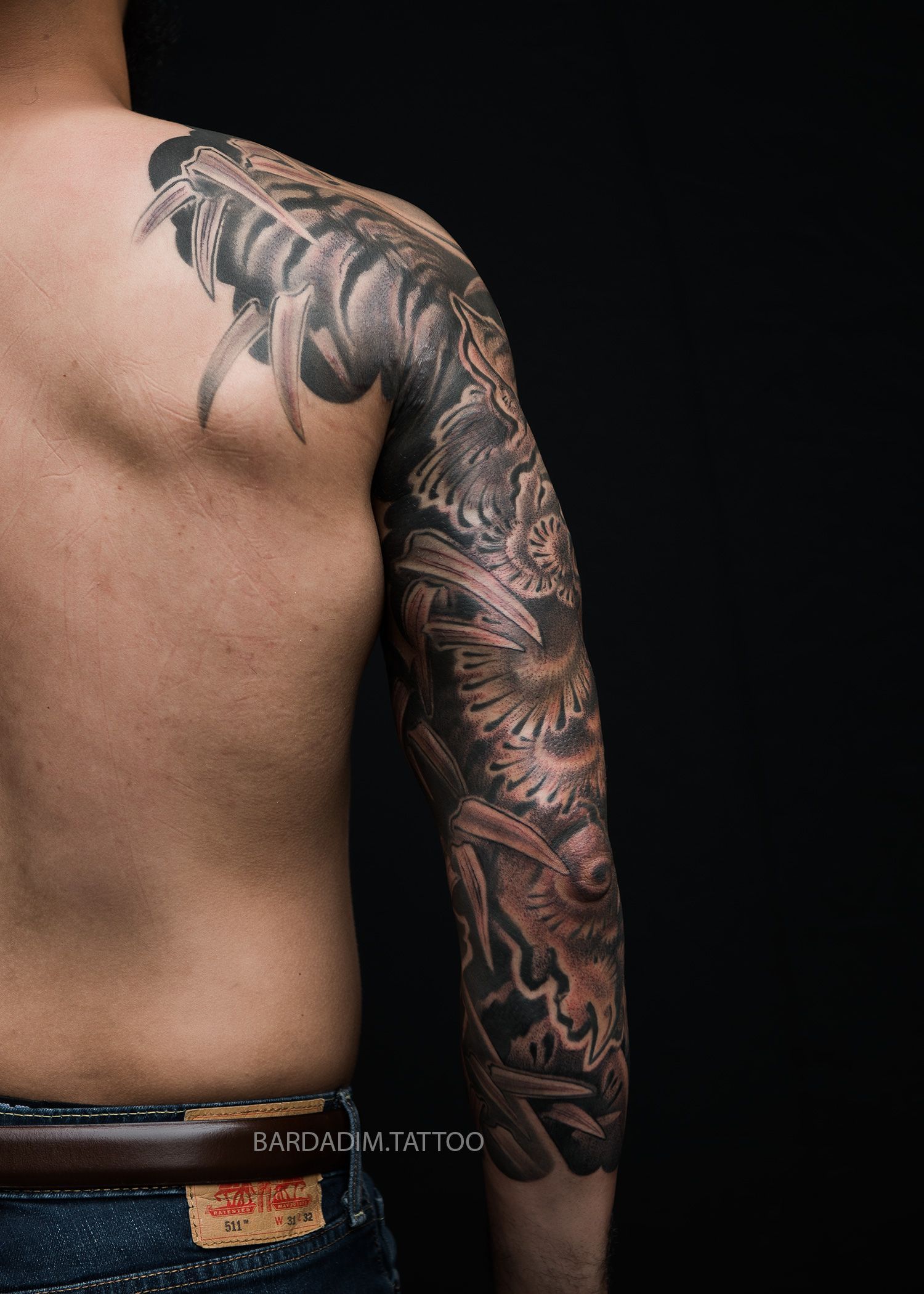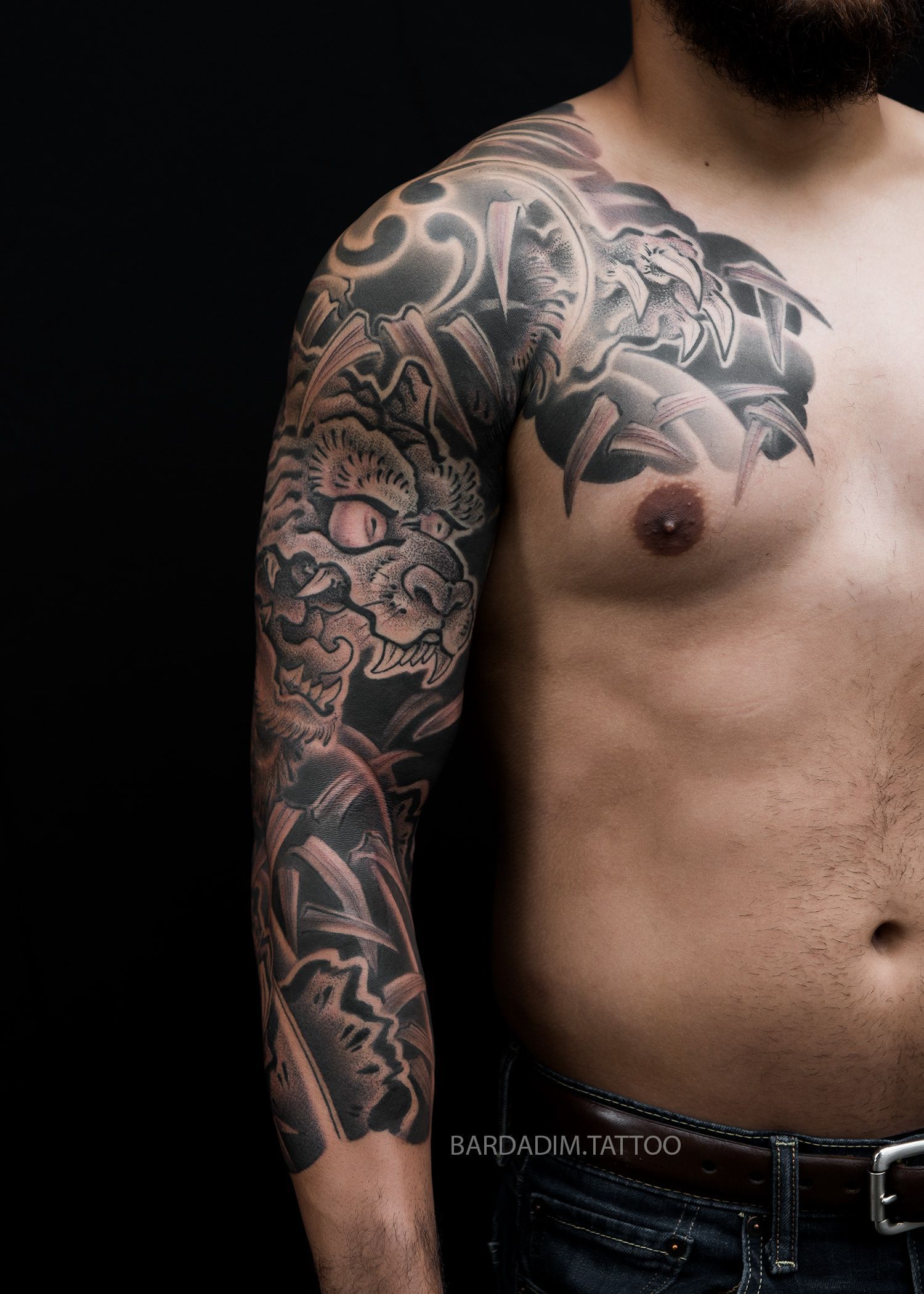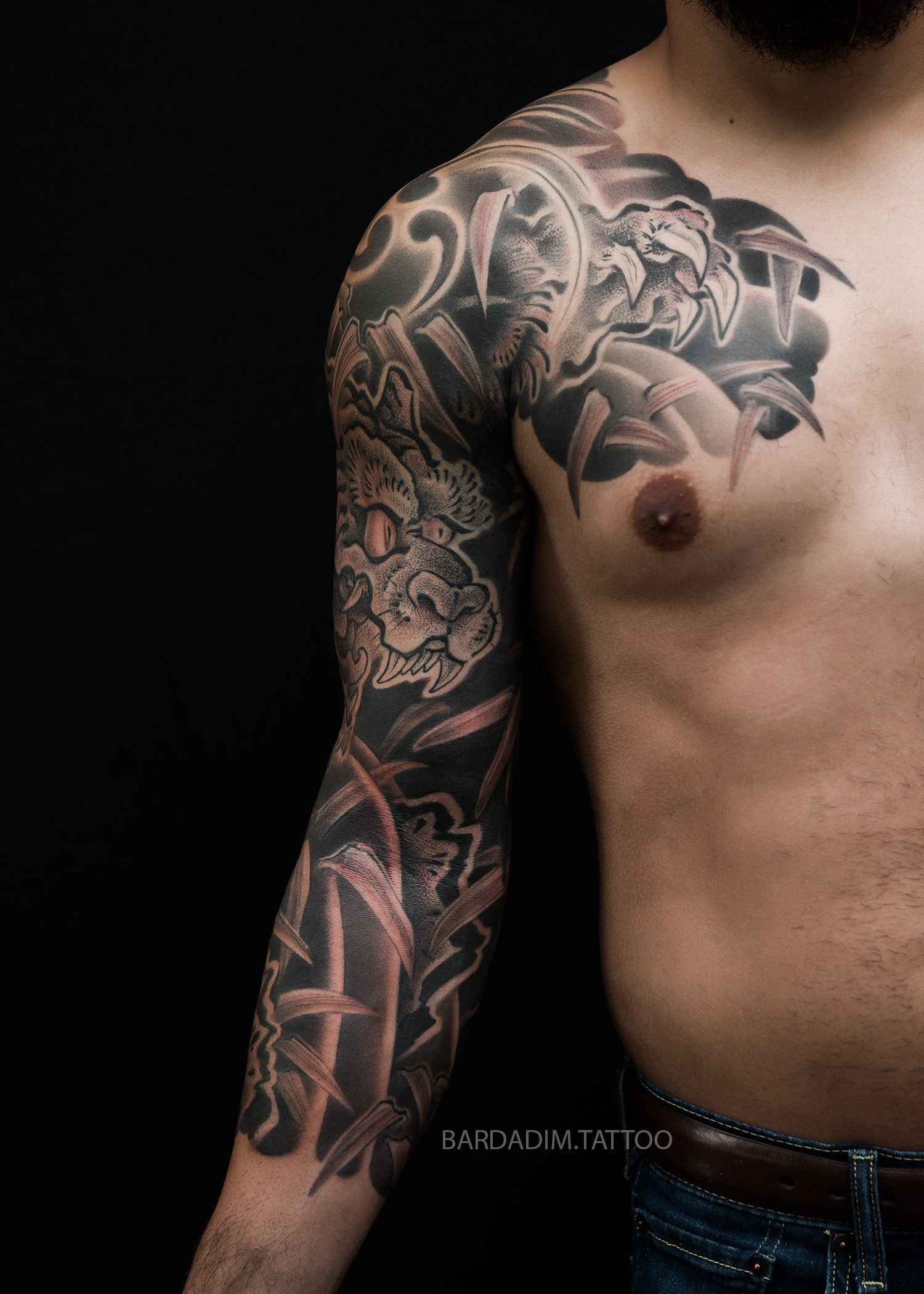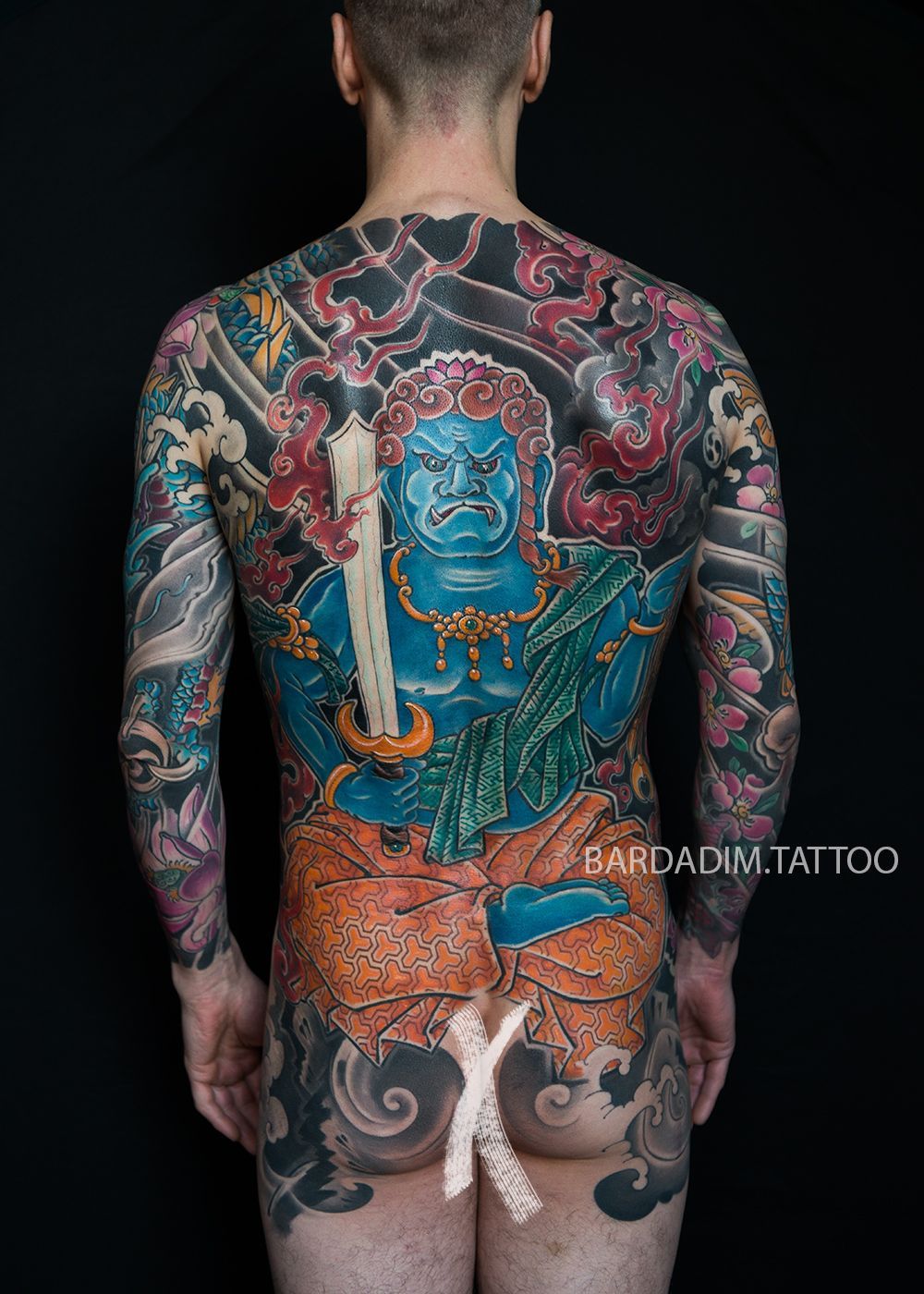The Mighty Tiger, Bamboo Leaves, and Mitsu Tomoe Symbol
Delve into the intricate symbolism of a captivating 3/4 sleeve Irezumi tattoo, skillfully rendered in black and grey ink. This unique composition features an angry tiger, elegant bamboo leaves, and the mystic Mitsu Tomoe symbol, each holding profound significance deeply rooted in Japanese culture and folklore.
The Tiger: Symbol of Strength and Courage
In Japanese culture, the tiger symbolizes strength, ferocity, and determination. Depicted in an angry stance in the Irezumi tattoo, the tiger embodies primal power and a fierce spirit. Known for its prowess and courage, the tiger is revered as a symbol of protection and overcoming adversity. Its presence in the tattoo conveys a sense of resilience and unwavering valor in the face of challenges.
Bamboo Leaves: Representation of Resilience and Adaptability
Bamboo holds a special place in Japanese culture as a symbol of resilience, flexibility, and durability. The bamboo plant bends but does not break, signifying adaptability and strength in the face of adversity. In the tattoo design, the graceful bamboo leaves add an element of harmony and balance, reflecting the interconnectedness of nature and human experience. Their presence signifies growth, endurance, and the ability to thrive under challenging circumstances.
Mitsu Tomoe Symbol: Spiritual Trifecta of Balance and Harmony
The Mitsu Tomoe symbol, consisting of three interlocked commas, is a profound emblem in Japanese folklore, representing a trinity of cosmic forces—earth, water, and sky. This symbol embodies a sense of balance, unity, and harmony within the universe. When incorporated into the Irezumi tattoo, the Mitsu Tomoe symbol adds a spiritual dimension, emphasizing the interconnectedness of the physical and spiritual realms. It serves as a reminder of the cyclical nature of life and the pursuit of inner equilibrium.
Subject Matter Meaning in Japanese Culture and Folklore
The amalgamation of the angry tiger, bamboo leaves, and Mitsu Tomoe symbol in the 3/4 sleeve Irezumi tattoo encapsulates a rich tapestry of meaning drawn from Japanese culture and folklore. It symbolizes the resilience and courage required to navigate life's challenges, the adaptability needed to thrive in ever-changing environments, and the harmonious balance sought in personal and spiritual growth.
This tattoo design not only showcases artistic skill but also serves as a visual narrative of strength, flexibility, and interconnectedness—a timeless representation of the profound themes embedded in Japanese tradition and mythos.
Embrace the artistry and symbolism of this Irezumi tattoo, a testament to the enduring legacy of Japanese culture reflected through intricate inked narratives on the canvas of the skin.
All Tattoo Projects
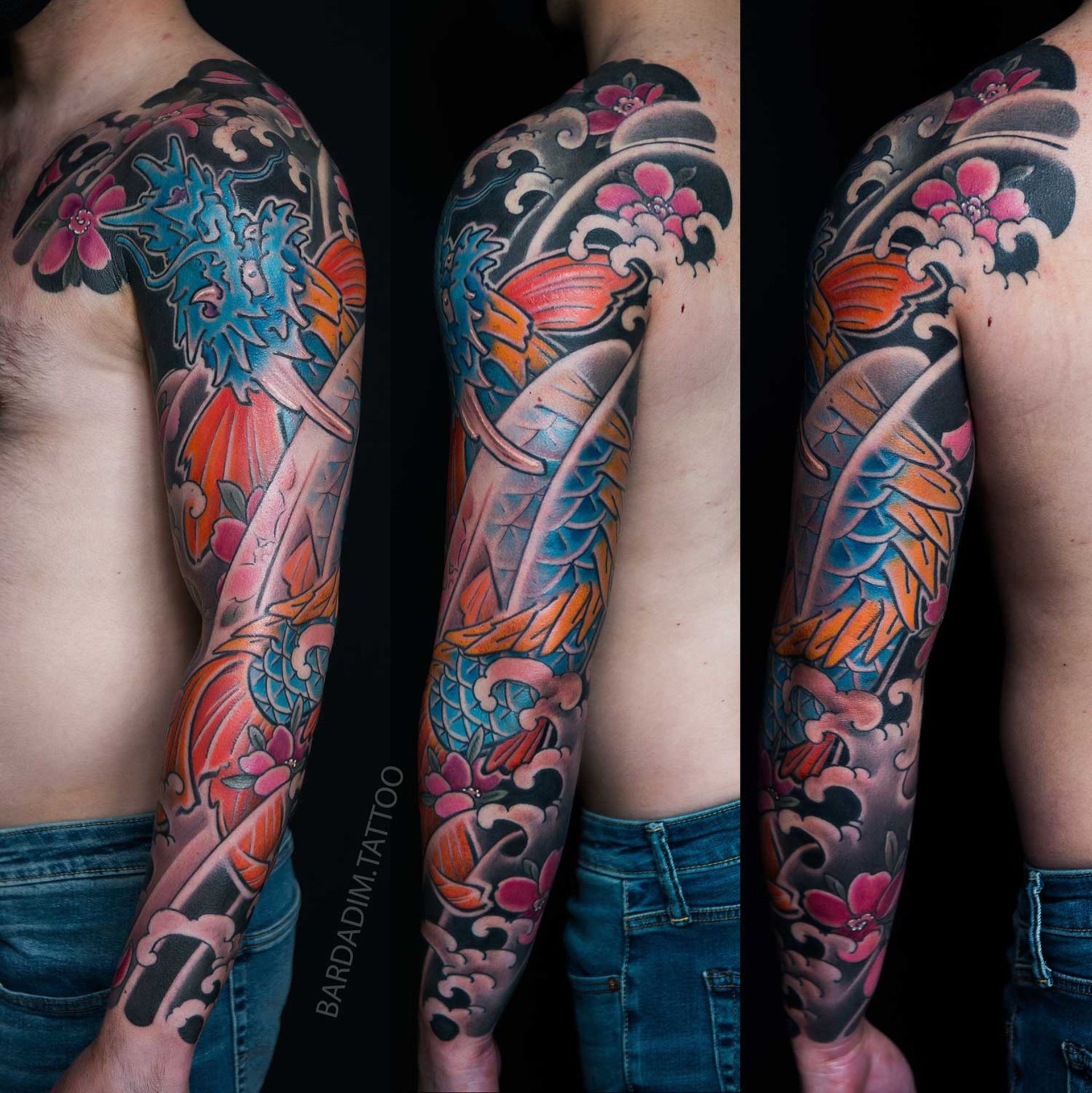
Other Posts


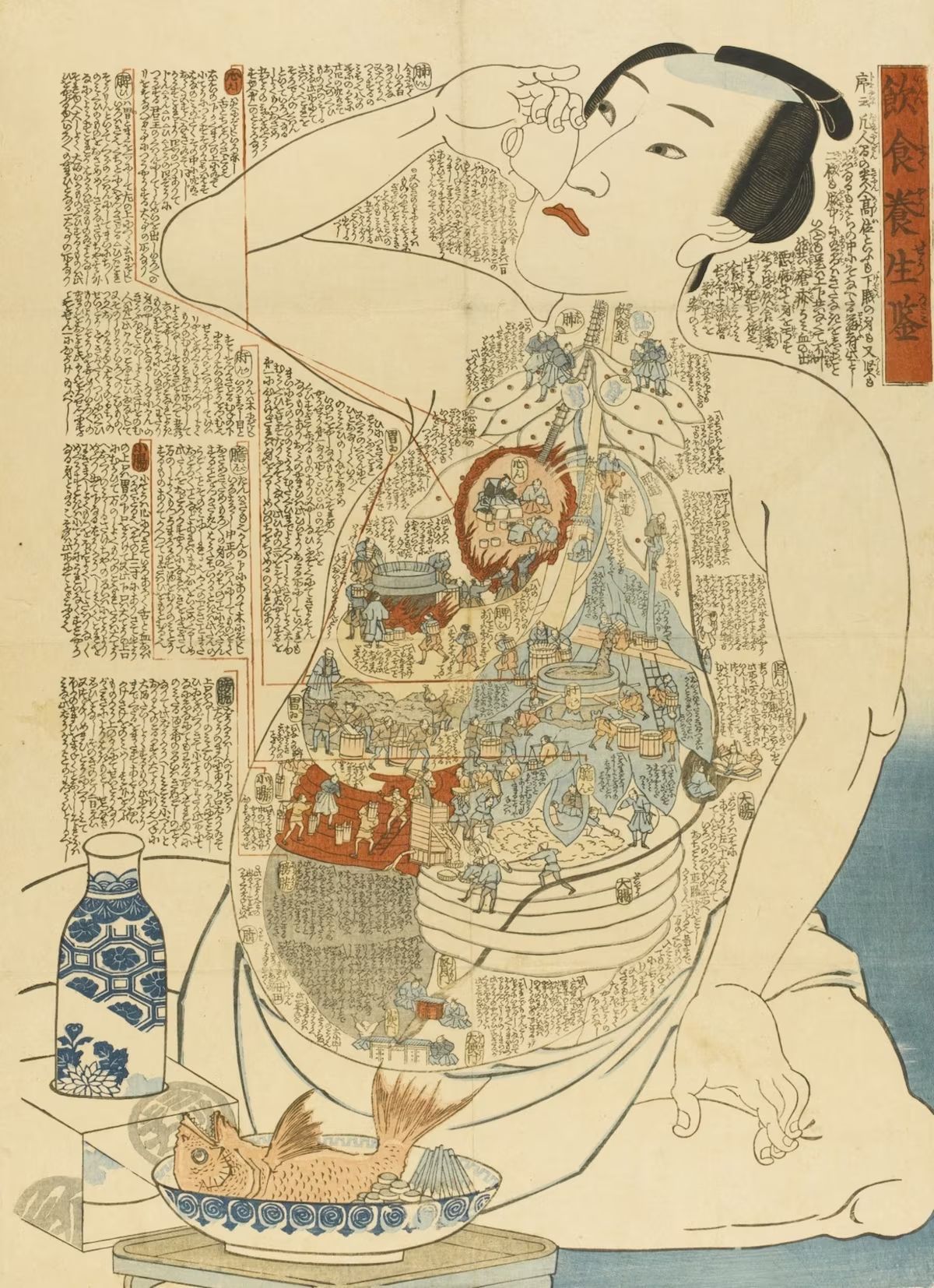
Ready to start your tattoo project?
We do NOT do walk-ins. ONLY private appointments which really easy to schedule. Please learn the process and request your consultation.



